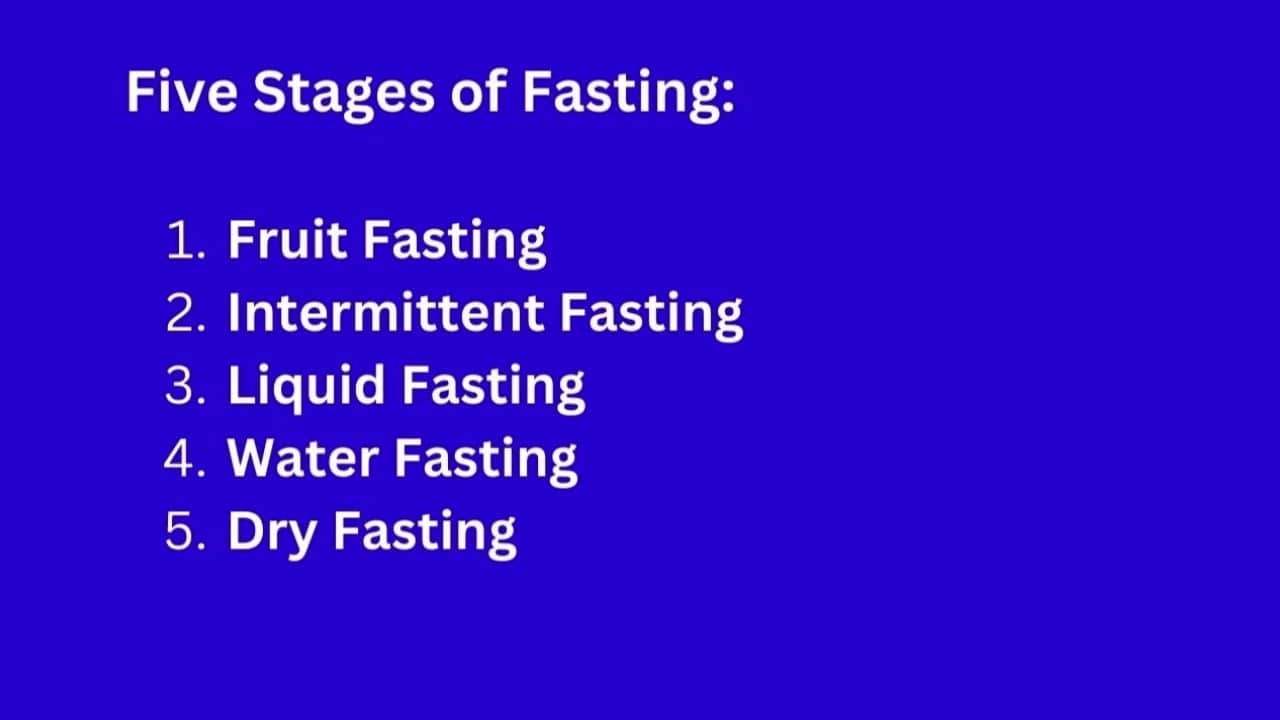Unlocking the Unique and Fascinating Aspects of Progressive Fasting
Fasting has been an essential practice in various religious traditions for centuries. In recent years, people have started to recognize the benefits of fasting, both physically and spiritually. However, despite their willingness to try, many individuals face difficulties regarding fasting. Today, I want to share some practical tips on how you can successfully develop a fasting practice.
One of the main reasons for failure in fasting is starting with a method that is too difficult for your health conditions. When you stop eating, your body begins to release the toxins it has accumulated over time. However, due to the toxic food we consume and the pollution in our environment, our bodies often struggle to handle this detoxification process. As a result, symptoms like dizziness, vomiting, and insomnia can occur, leading many people to give up too quickly.
But here’s the thing: fasting is an incredibly effective practice for improving our health and spiritual well-being. So, let me introduce you to the progressive fasting method, which can prepare your body for fasting success.
Stage 1: Fruit Fasting
Start with fruit fasting if you find it challenging to stop eating altogether. You can eat anything you want during this phase, as long as it’s a fruit—snack on melons, apples, or filling fruits like bananas and avocados. Fruits are incredibly cleansing for the body, and after a few days, you’ll find yourself less drawn to your usual addictive foods like coffee, candy, or chips. Give fruit fasting a go for at least one day, and once you feel less addicted to food, you’re ready to move on to the next stage.
Stage 2: Intermittent Fasting
Intermittent fasting involves eating within a specific window and refraining from eating the rest of the day. The popular 8:16 method suggests eight hours of eating and 16 hours of fasting. For example, if you eat lunch at noon, finish dinner before 8:00 pm. During your eating hours, you can consume anything you want. Once you can practice intermittent fasting for at least ten days, it’s time to progress to the next stage.
Stage 3: Liquid Fasting
During liquid fasting, you only consume liquids and avoid solid food. In the summer, opt for fruit or vegetable juice; in winter, prefer hot soup or herbal tea. Practice this for at least three days, and you’ll notice a considerable release of solid waste from your body. Repeat this stage as necessary until you feel your body is significantly cleansed.
Stage 4: Water Fasting
Water fasting involves drinking only water for several days. Many people make the mistake of jumping straight into water fasting, which can lead to intense detox reactions. It’s crucial that your body is reasonably clean and that you have been eating a healthy diet for some time before attempting water fasting. Up to seven-day water fast to ensure your body can handle it.
Stage 5: Dry Fasting
Dry fasting takes it one step further by abstaining from food or drinks, including water. While this may sound daunting, those with experience in water fasting can typically handle a three-day dry fast. The lack of intake eliminates food stimuli, making it easier to forget about eating altogether. Don’t worry; discomforts like dryness and fatigue are expected during this stage, but remember to listen to your body and adjust accordingly.
Now, it’s essential to exercise a few precautions, regardless of the fasting method. Don’t give up too quickly; discomfort is expected, but enduring it builds your inner strength. However, it’s best to seek medical attention if symptoms become severe or life-threatening. And when breaking your fast, do it slowly. Begin with easily digestible foods in small amounts, like diluted juice or small pieces of fruit. Avoid devouring a beef steak immediately, as this can lead to complications.
So, are you ready to embark on this transformative journey? Give fasting a try and experience its excellent results firsthand. Remember, fasting is not just about hearing or talking; it’s about the personal experience. Good luck, and here’s to improved health and spiritual growth. Cheers!
*****
*****
Summary of Transcript:
The video discusses the benefits of fasting physically and spiritually but acknowledges that many people struggle with fasting for various reasons. The speaker provides practical tips for successful fasting, starting with fruit fasting, then progressing to intermittent fasting, liquid fasting, water fasting, and finally, dry fasting. They emphasize the importance of gradually building up to more difficult fasting methods and listening to one’s body. The speaker also advises not to give up too quickly and to resume eating slowly after fasting. They encourage viewers to try fasting for themselves to experience its benefits firsthand.
*****
Summary of Description:
The content discusses personal experiences with fasting and highlights the spiritual and physical benefits. It describes different fasting methods, such as fruit, intermittent, liquid, water, and dry. Additionally, it mentions common mistakes people make when fasting and provides tips for developing effective fasting habits. Finally, the content includes precautions to consider while fasting.
*****
Source Description
* Personal Experience in Fasting
* Spiritual and Physical Benefits of Fasting.
* Fruit Fast, Intermittent Fasting, Liquid Fast, Water Fast, Dry Fast
* Common Mistakes in Fasting.
* How to Develop Fasting Habits Effectively
* Precautions in Fasting


